Written Methods for Addition
Column Addition of up to 3 Digits - No Regrouping
Year groups: 3
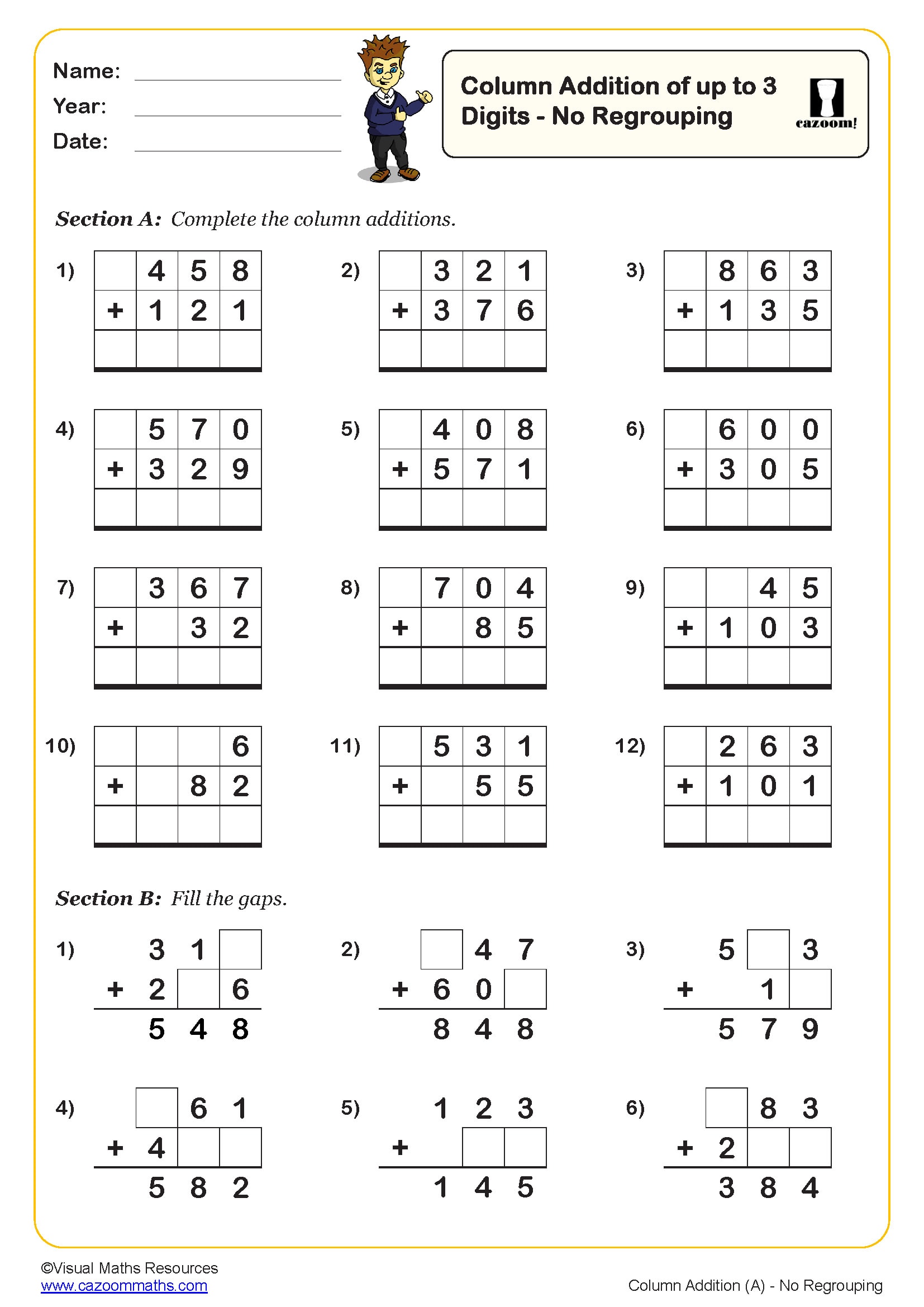
Column Addition of up to 3 Digits - With Regrouping (A)
Year groups: 3
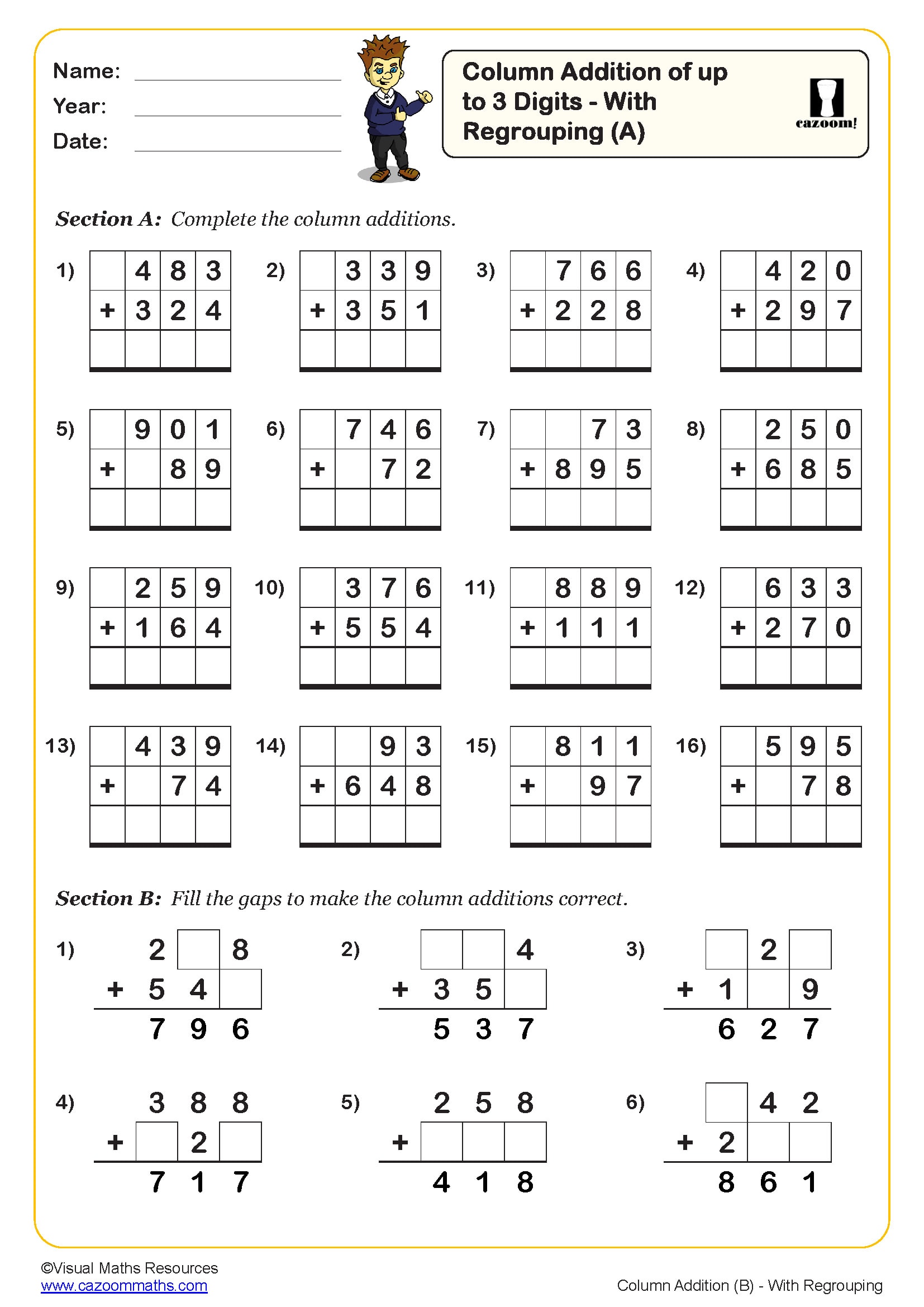
Column Addition of up to 3 Digits - With Regrouping (B)
Year groups: 3
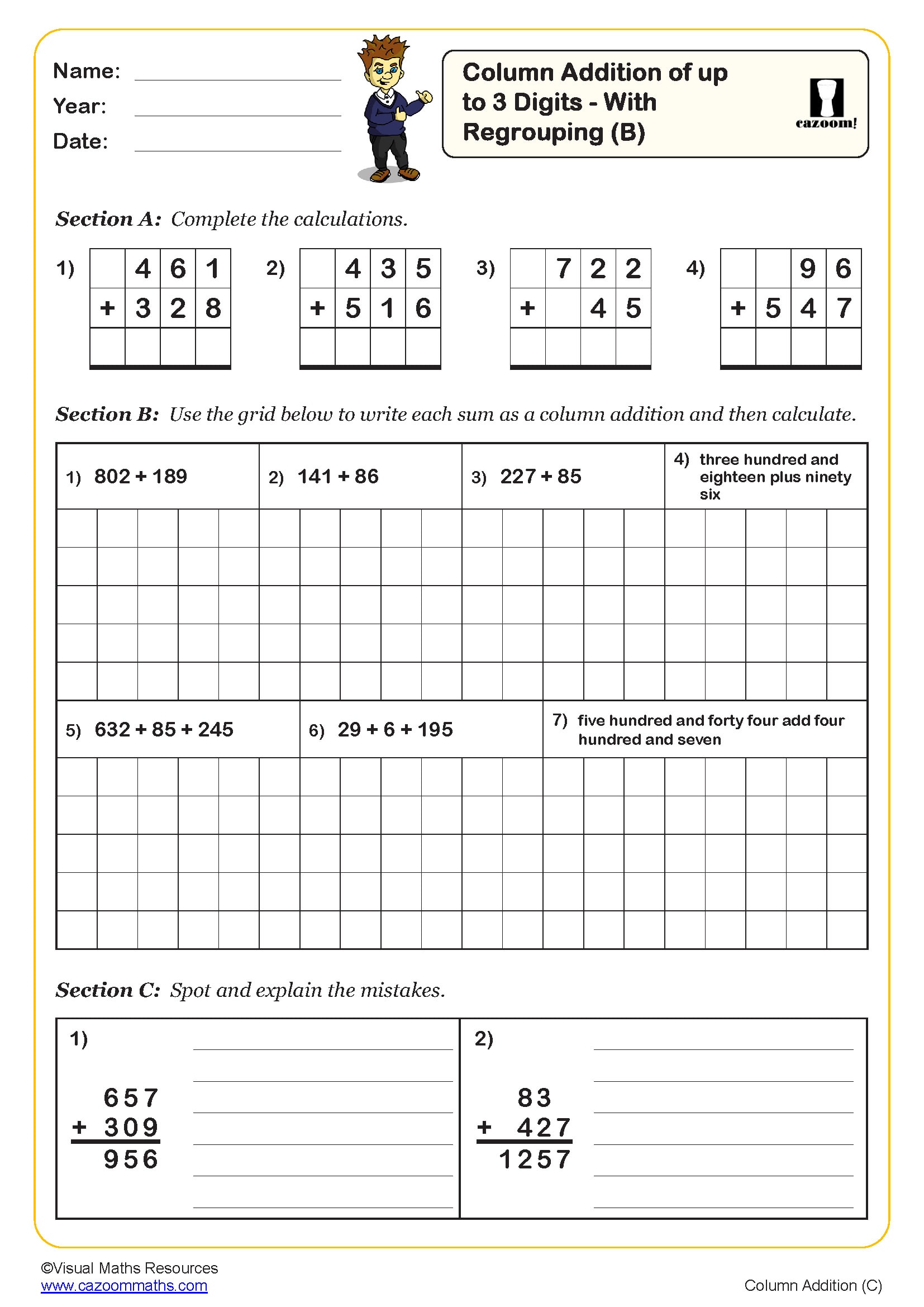
Column Addition Challenge
Year groups: 4, 5
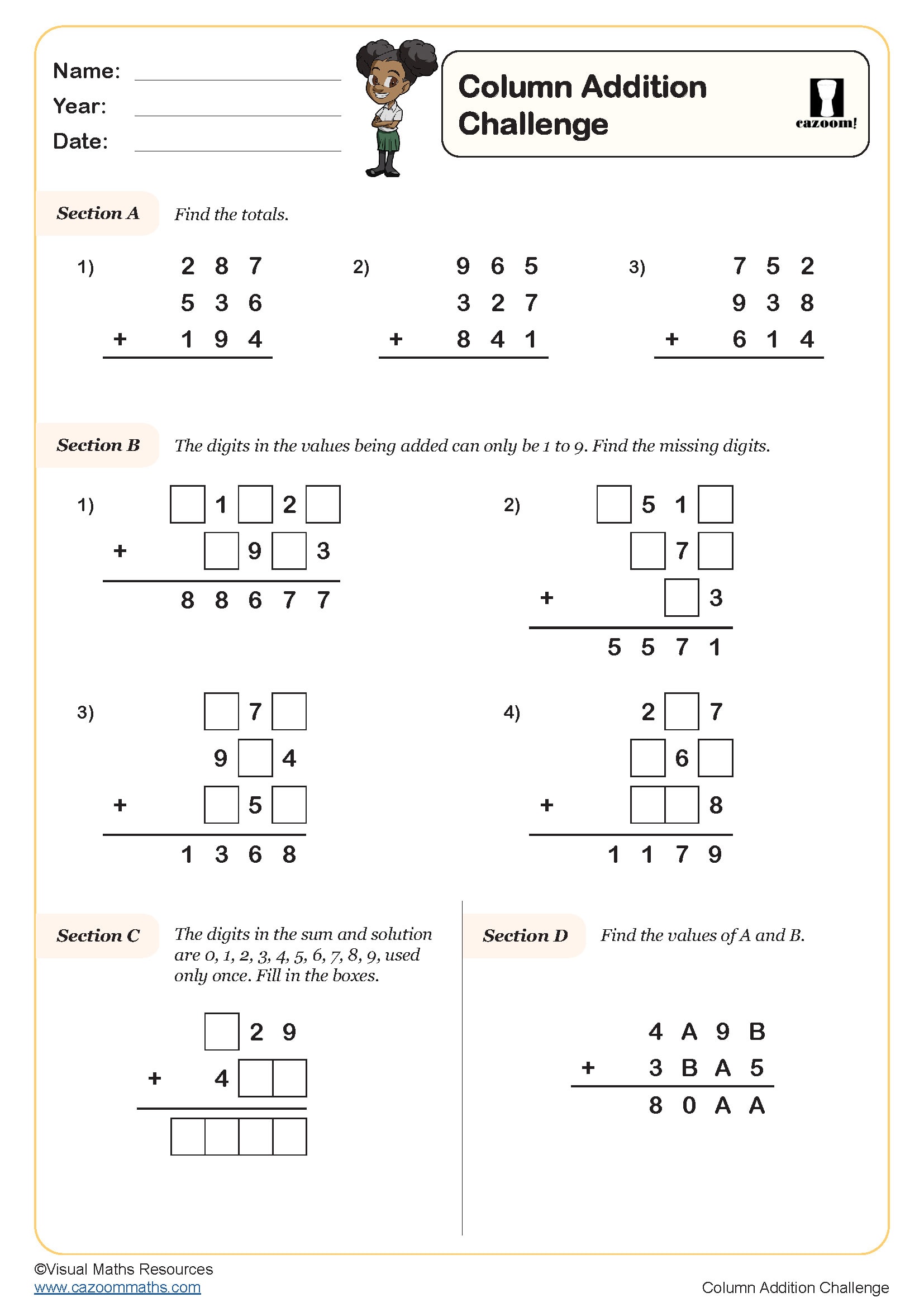
Column Addition of up to 4 Digits (A)
Year groups: 4
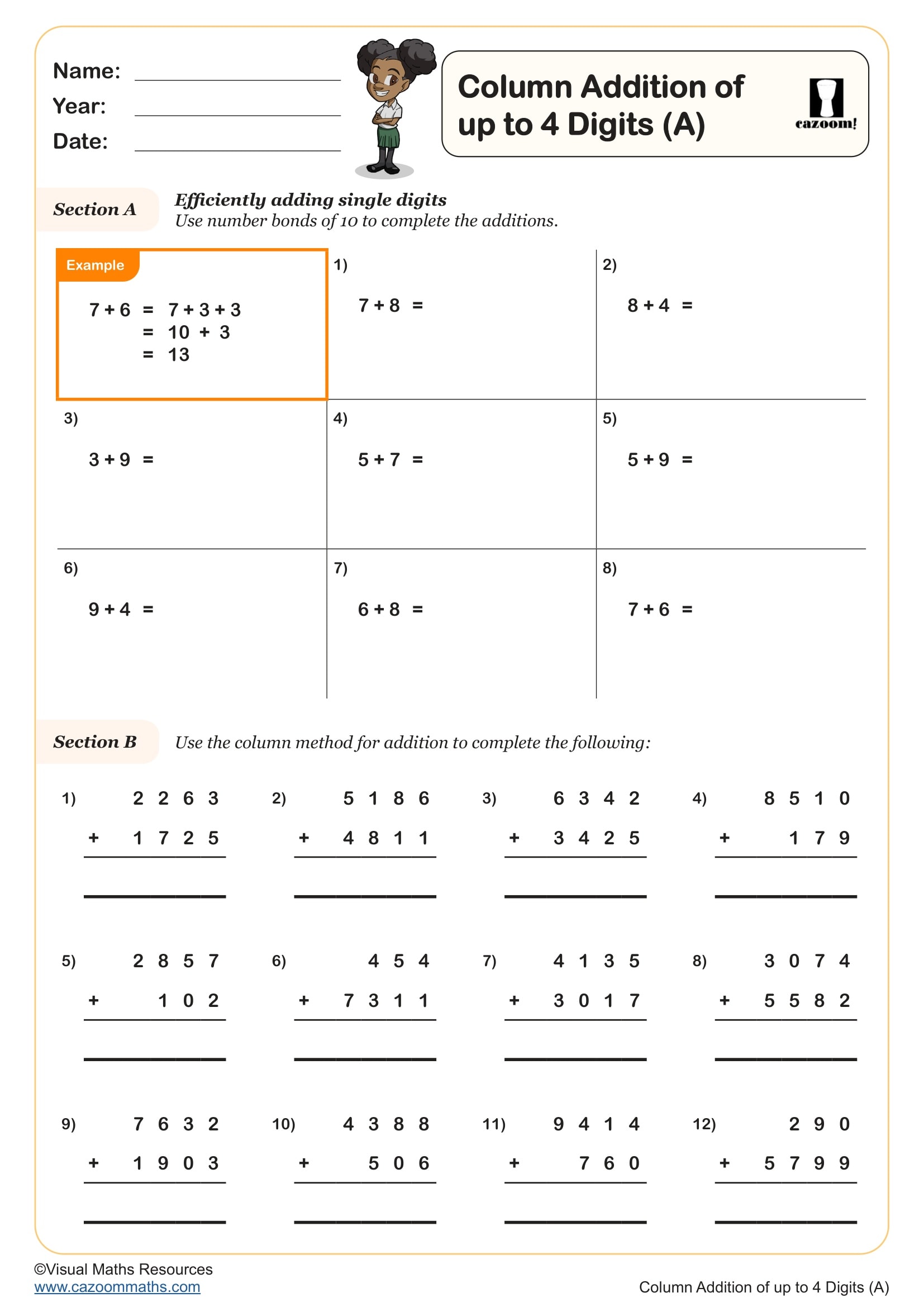
Column Addition of up to 4 Digits (B)
Year groups: 4
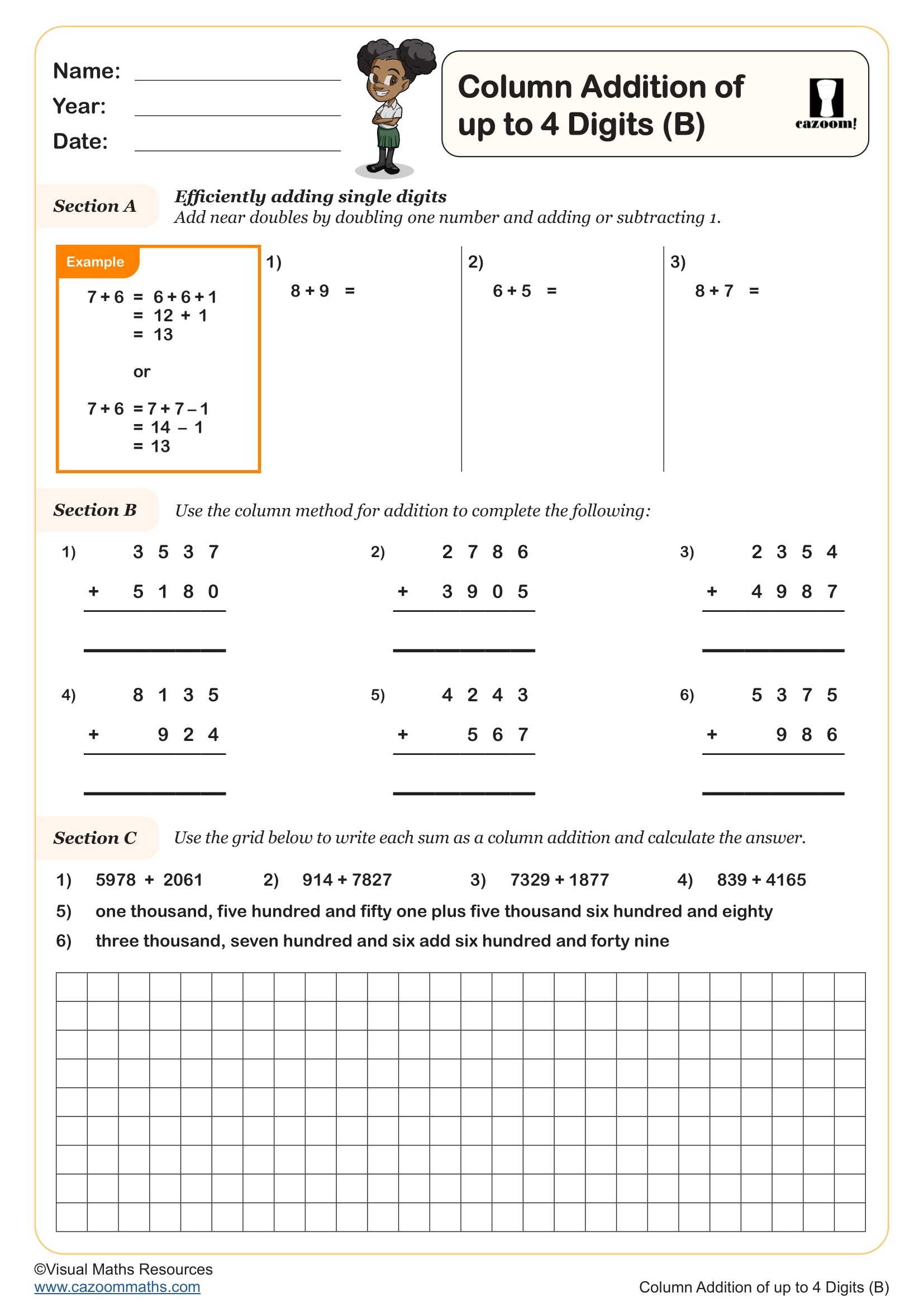
Use Formal Methods for the Addition of Integers
Year groups: 4

Addition of 4 and 5-digit Numbers
Year groups: 5, 6
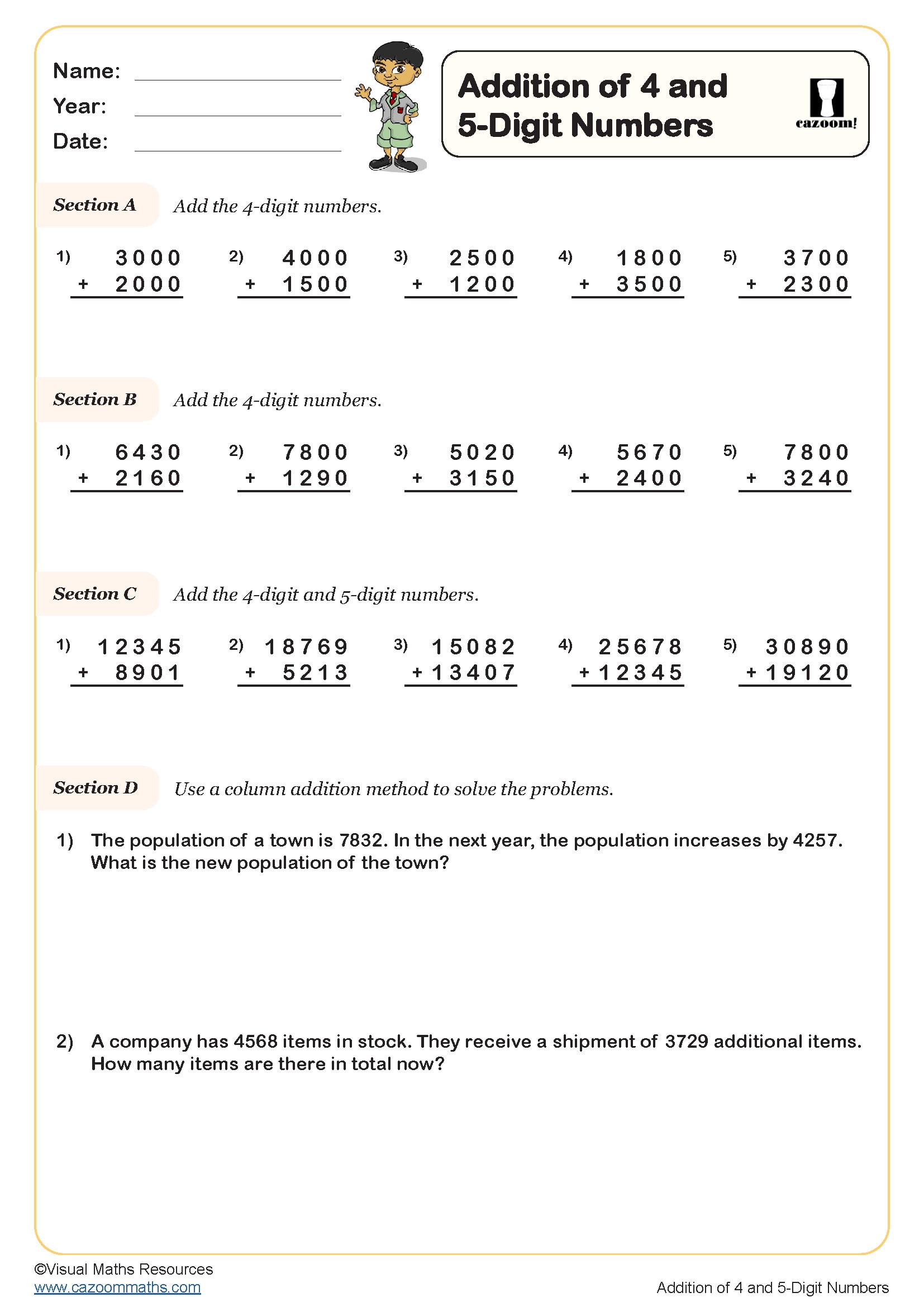
Column Addition - Decimals (A)
Year groups: 5
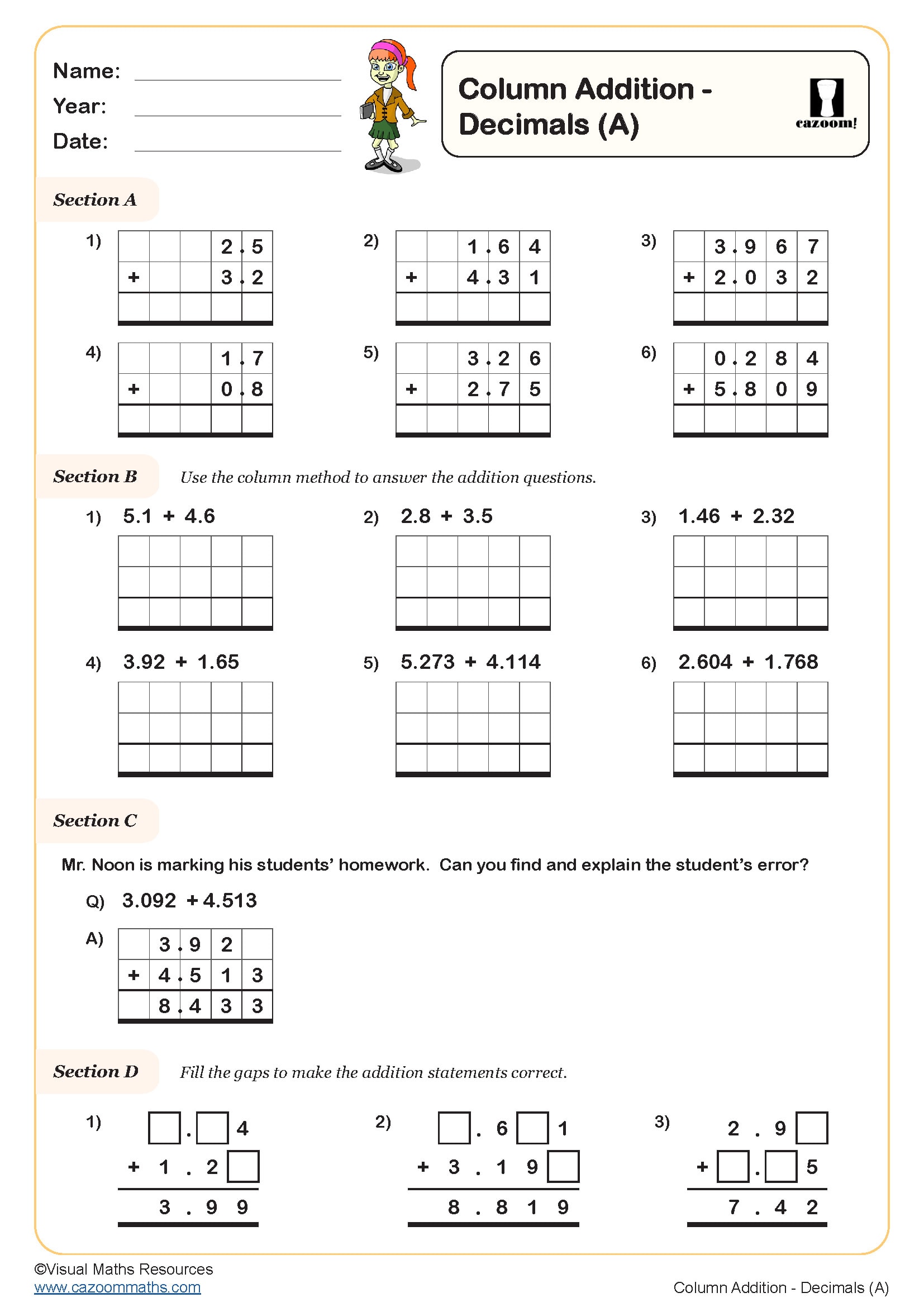
Column Addition - Decimals (B)
Year groups: 5, 6
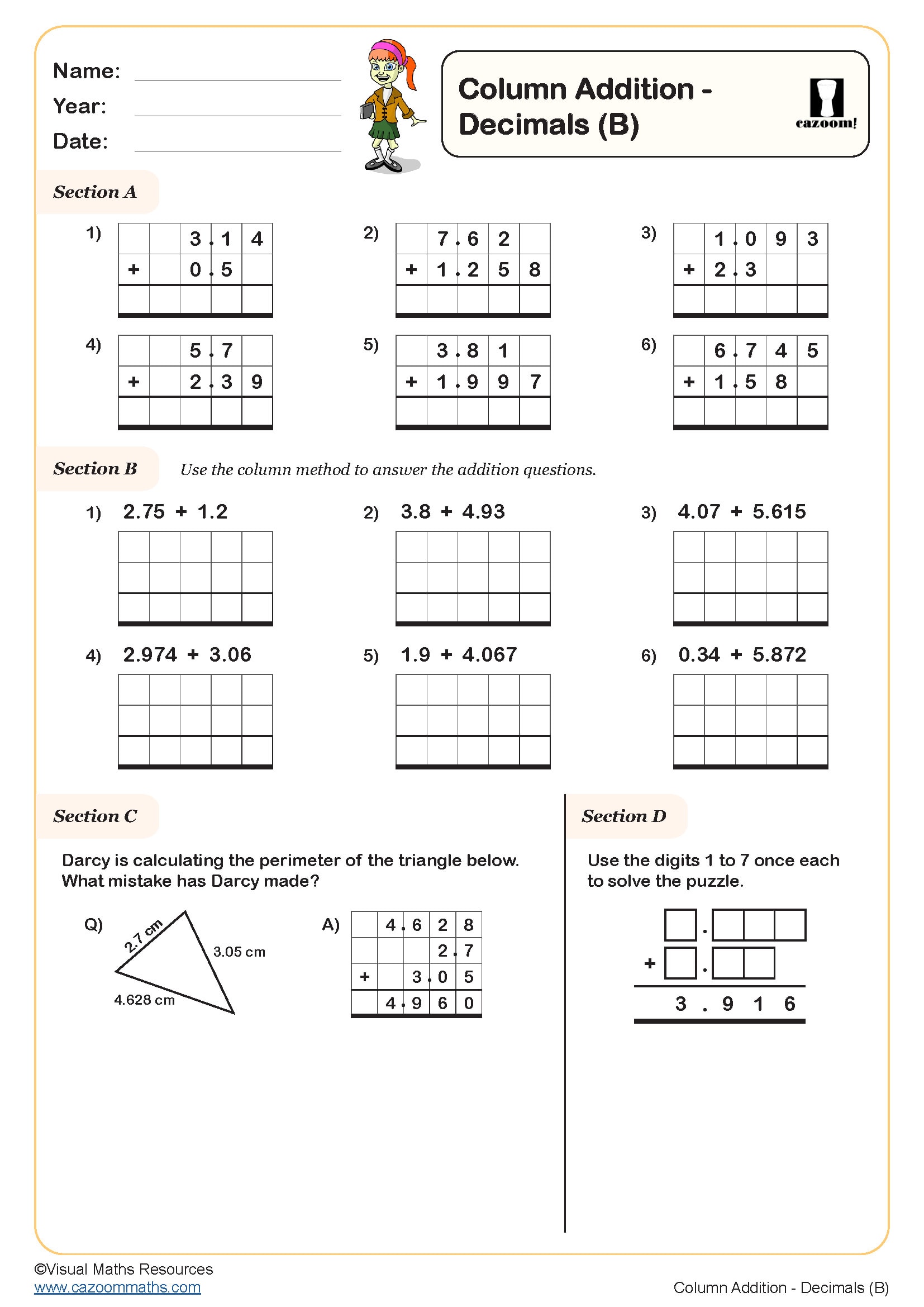
PRINTABLE PDF ADDITION WORKSHEETS WITH ANSWERS
All our worksheets are in easy-to-download printable PDF format, and include separate answer sheets. These Written Methods Addition Worksheets resources include a wide range of exercises. For example- adding 2-digit and 3-digit numbers, using column method, solving real-life word problems, practising regrouping and many more. All these worksheets are custom-made for both- parents and teachers. All our worksheets include clear layout and visual guidance, so that they make the whole learning process easier and more enjoyable.
What Are Written Methods in Addition?
Written methods in addition are nothing more than just step-by-step ways to solve different addition problems using a paper and a pencil. These processes will help your children break down the sums into manageable small parts. There are some common methods of addition, like column addition, where numbers are lined up by place value and added starting from the right. Therefore, this method is specifically useful when adding large numbers or carrying digits. By learning these written methods, your students will be able to solve the sums quickly and correctly without relying only on mental maths.
Why Learn Written Methods?
Learning these written methods are important because they provide children an easier way to add numbers. This process is especially useful when mental strategies are not enough. Let’s take an example, if a student is adding £124 + £356, using the column method will help them solve it accurately. These Written Methods are helpful in real-life situations like shopping, budgeting, measuring and many more. Whether your young math learners are solving a word problem or checking their mental calculation, written methods will help them build confidence and fluency.
Use of Written Addition in Real Life
In our everyday lives, we use this addition every day, even without noticing it. For example, if you’re shopping and want to know the total cost of the items you want to buy. In this case, you can add the prices together. Or even while cooking a meal, you might need to add amounts of ingredients. Therefore, learning how to do addition properly gives your children a strong foundation in maths that they’ll use throughout life—from schoolwork to making everyday decisions.